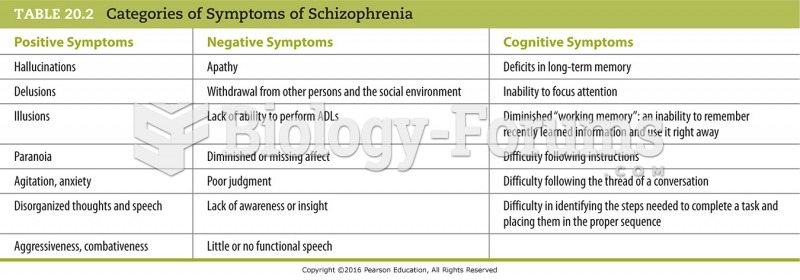Answer to Question 1
Correct Answer: 1,2,3
Rationale 1: In the nervous system, calcium ions influence the release of neurotransmitters and the excitability of all neurons.
Rationale 2: Contraction is dependent on calcium ion movement in skeletal, smooth, and cardiac muscle cells.
Rationale 3: Calcium is important for blood coagulation; it converts prothrombin into thrombin.
Rationale 4: Calcium is not responsible for maintaining the normal respiratory rate.
Rationale 5: Calcium is not responsible for blood glucose control.
Global Rationale: In the nervous system, calcium ions influence the release of neurotransmitters and the excitability of all neurons. Contraction is dependent on calcium ion movement in skeletal, smooth, and cardiac muscle cells. Calcium is important for blood coagulation; it converts prothrombin into thrombin. Calcium is not responsible for maintaining the normal respiratory rate or for blood glucose control.
Answer to Question 2
Correct Answer: 2
Rationale 1: Osteoporosis occurs, particularly after menopause, as a result of unbalanced bone resorption and bone formation. It does not necessarily lead to activity intolerance.
Rationale 2: The client who has osteoporosis is at increased risk for injury from falls and resulting fractures.
Rationale 3: Host defenses are not impaired with osteoporosis.
Rationale 4: Constipation is an adverse effect of some calcium replacement therapies, but it is not a priority.
Global Rationale: The client who has osteoporosis is at increased risk for injury from falls and resulting fractures. Osteoporosis occurs, particularly after menopause, as a result of unbalanced bone resorption and bone formation. It does not necessarily lead to activity intolerance. Host defenses are not impaired with osteoporosis. Constipation is an adverse effect of some calcium replacement therapies, but it is not a priority.







